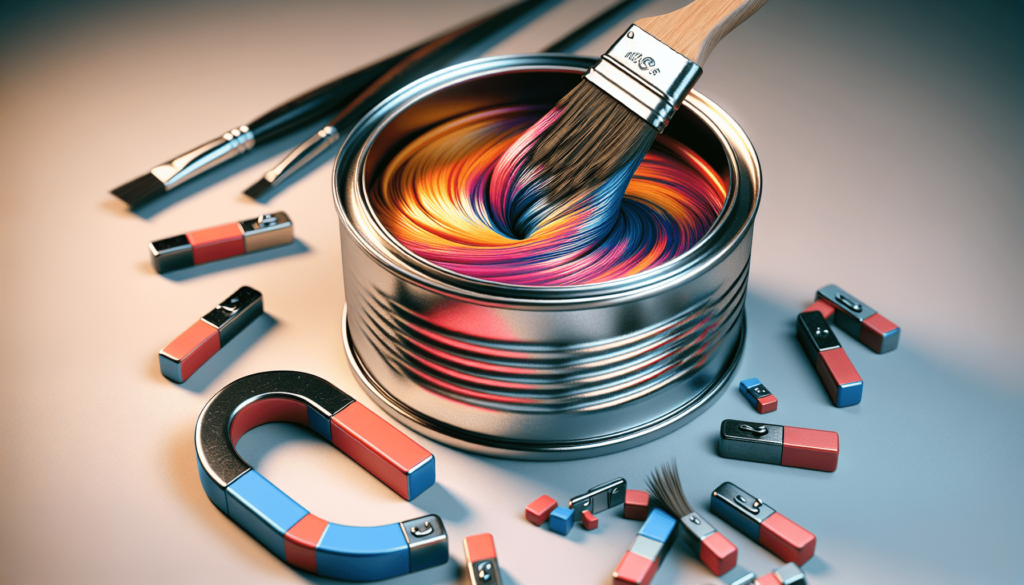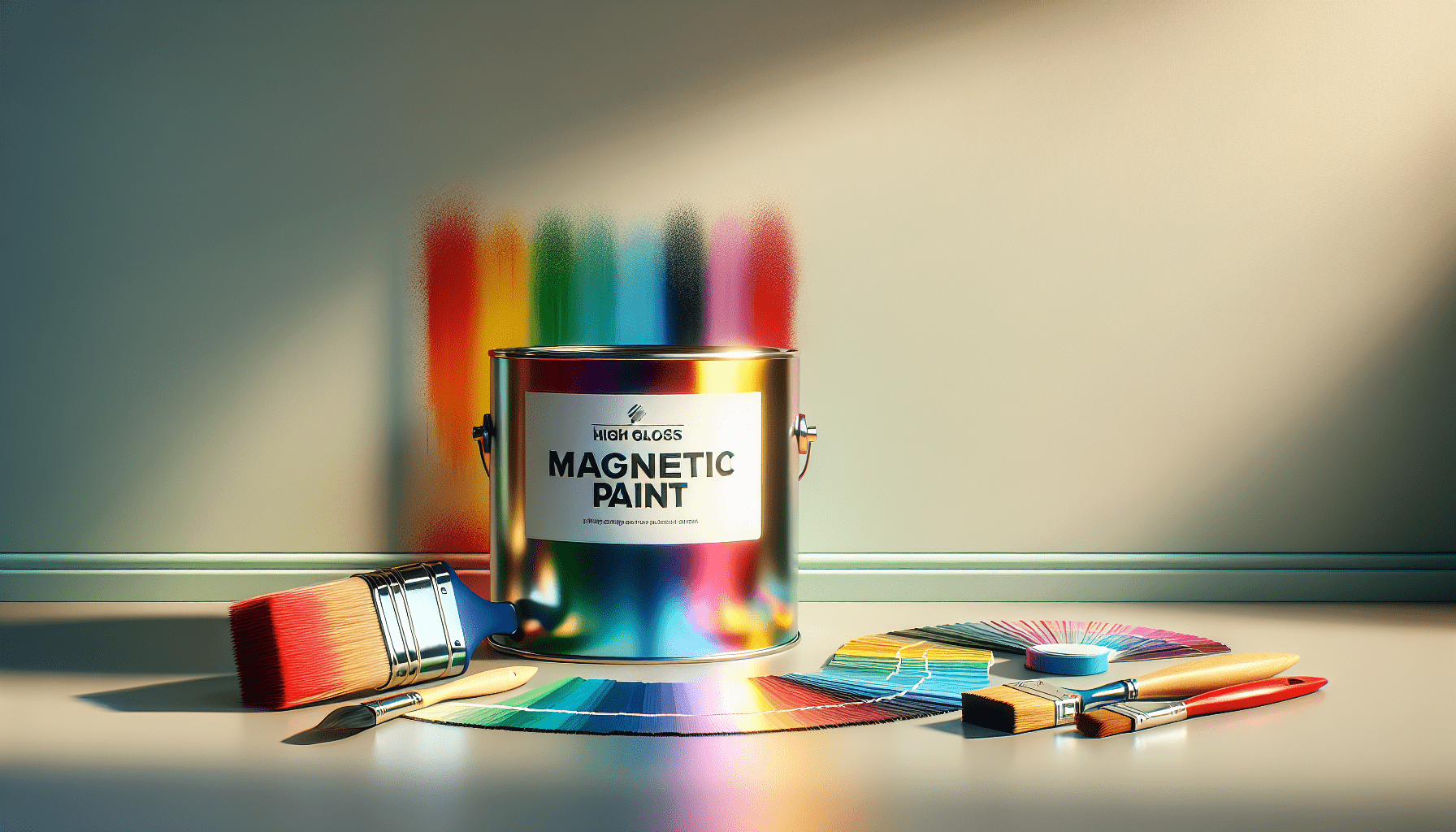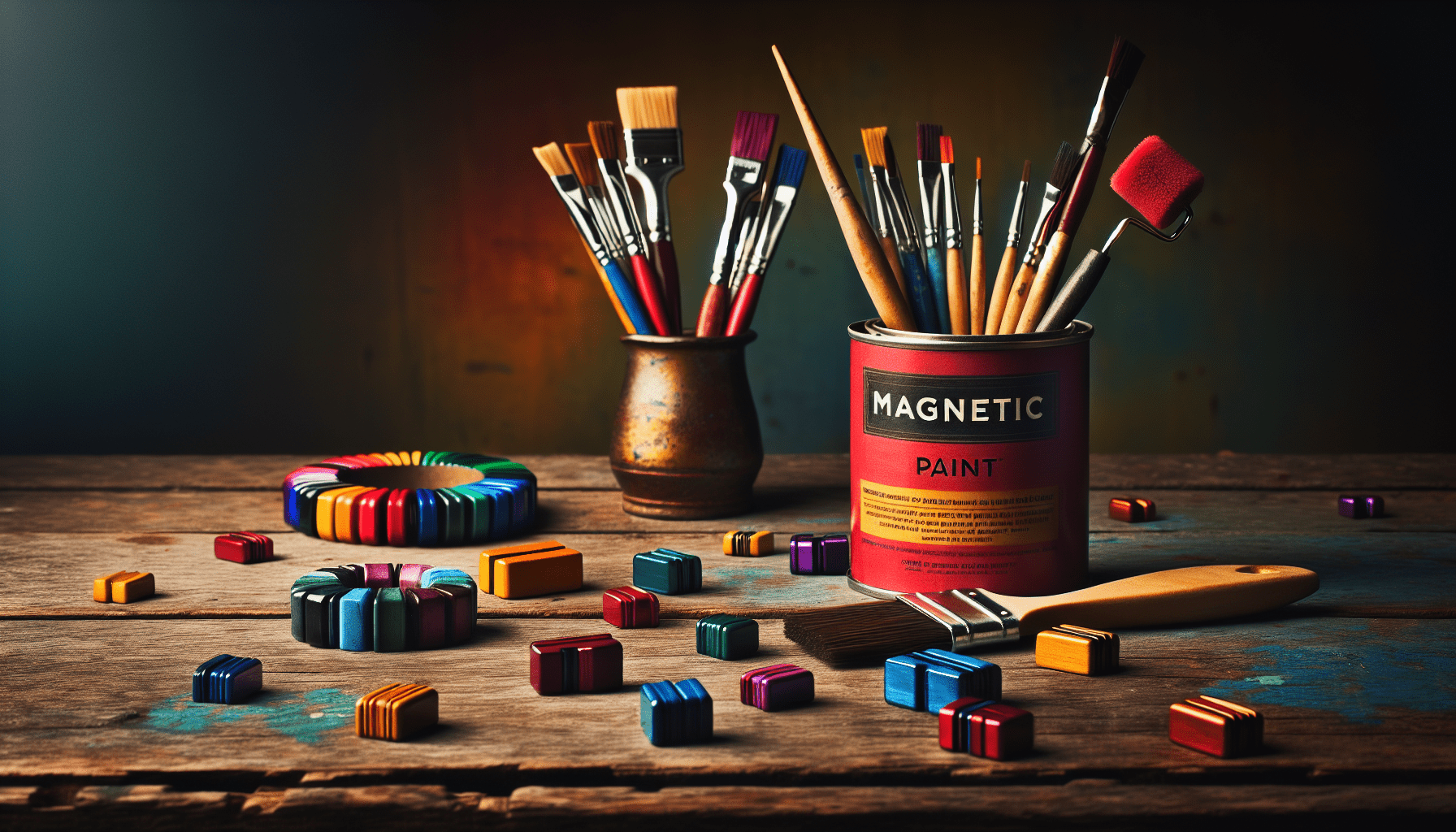Have you ever thought about transforming your space with a touch of creativity? If you’ve applied magnetic paint and are now wondering about painting over it, you’re in the right place to get some clarity!
Understanding Magnetic Paint
Magnetic paint is quite intriguing. It’s not just any ordinary paint; it has tiny iron filings mixed in, allowing magnets to stick to your walls or surfaces. This innovative product is perfect for creating interactive spaces for your kids, displaying art, or simply organizing notes in a stylish way. However, you might be pondering what happens if you wish to change the color or style of your space post-application.
Characteristics of Magnetic Paint
There are a few things you should know about magnetic paint. It’s typically a dark shade, usually black or gray, due to the iron filings. This can affect how subsequent layers of paint interact with it. Here’s a breakdown of its main features:
| Feature | Description |
|---|---|
| Composition | Contains magnetic particles (small iron filings) |
| Color | Usually a dark base, making it sometimes hard to cover |
| Texture | Generally has a thick, slightly gritty texture |
| Application | Requires multiple coats for effective magnetism |
Understanding these features can help you make informed decisions later on.
Can You Paint Over Magnetic Paint?
The straightforward answer is yes; you can paint over magnetic paint. However, there are some essential steps and considerations to ensure you achieve the best results.
Choosing the Right Paint
When you decide to repaint over magnetic paint, it’s crucial to select a compatible paint. You can choose between latex-based or chalk paint, but here are some options to consider:
Latex-Based Paint
- Pros: It dries quickly, is easy to clean, and comes in a variety of finishes and colors.
- Cons: If applied too thickly over magnetic paint, it may affect the magnetic properties.
Chalk Paint
- Pros: Offers a matte finish and adheres well to surfaces, providing a rustic look.
- Cons: It may require a sealing topcoat to protect the surface when used.
Preparation is Key
Preparing the surface before painting over magnetic paint is essential. Here’s how you can ensure everything is set for a smooth finish:
- Clean the Surface: Dust and dirt can interfere with paint adhesion, so wipe the area with a damp cloth to remove any debris.
- Repair Any Imperfections: If there are holes or cracks, use filler to create a smooth surface. Sand it down once it’s dry.
- Consider a Primer: While magnetic paint has a unique texture, applying a primer can help with adhesion for the paint layer.

Step-by-Step Guide to Painting Over Magnetic Paint
Now that you’ve prepped the area, here’s a straightforward guide to painting over magnetic paint:
Step 1: Gather Your Materials
Before starting, ensure you have everything you need:
- Paint (latex or chalk)
- Primer (if desired)
- Foam roller or paintbrush
- Sandpaper (fine-grit)
- Drop cloths and painter’s tape
- Cleaning supplies
Step 2: Protect Surrounding Areas
You don’t want to accidentally get paint where it doesn’t belong. Use painter’s tape to cover edges and lay down drop cloths to protect your floors and furniture.
Step 3: Apply Primer (If Necessary)
If you’ve chosen to use a primer, apply a thin layer using a foam roller or brush. Allow it to dry completely as per the manufacturer’s instructions.
Step 4: Paint with Your Chosen Color
Using a foam roller or brush, apply your chosen paint in thin, even layers. It’s better to do multiple coats than to apply one thick layer. Allow each layer to dry before adding the next one. This will help maintain the magnetic properties of the underlying paint.
Step 5: Evaluate and Repeat
Once you’ve painted the desired number of layers, step back and evaluate. If you’re happy with the color and coverage, proceed to clean up. If not, you might need to add another layer.
Step 6: Clean Up
Once everything is dry, carefully remove the painter’s tape and tidy up your work area. Take a moment to admire your newly transformed space!
Effects of Painting Over Magnetic Paint
While you can certainly paint over magnetic paint, there are some effects you should be aware of.
Reduced Magnetism
You might notice that the magnetic properties of the paint may be reduced, especially if applying thicker layers of paint. While this won’t completely eliminate the magnetism, it can affect how well magnets stick.
Table: Effects of Different Paint Types on Magnetism
| Paint Type | Effect on Magnetism |
|---|---|
| Latex | Minimal to Moderate |
| Chalk | Moderate |
| Oil-Based | Low |
Choosing a thinner application can help mitigate this effect, so keep that in mind when selecting how to proceed.

Tips for Sustaining Magnetic Properties
If maintaining the magnetic property is a priority for you, follow these additional tips:
Use Thinner Coats
Applying thinner layers of paint will allow you to maintain the underlying magnetic feature of the paint. This may require a few extra coats, but the results will be more satisfactory.
Avoid High-VOC (Volatile Organic Compounds) Paints
High-VOC paints may have a more substantial negative effect on the magnetism as they dry. Opt for low-VOC or no-VOC options when possible.
Keep Magnets in Mind
After painting, use lighter or flatter magnets to ensure they adhere effectively to the surface. Bulky or heavier magnets may have difficulty sticking if the paint layers are thick.
Alternatives to Magnetic Paint
If you’re feeling uncertain about painting over magnetic paint or are starting from scratch, there are other options you might consider.
Magnetic Wallpaper
Magnetic wallpaper offers a similar interactive experience without the need for traditional painting. This can provide flexibility, as you can easily change the design without affecting a painted surface.
Magnetic Boards
Another option is to use magnetic boards. They can be easily mounted and can be painted or modified as you desire, without the commitment that comes with painted walls.
Common Mistakes to Avoid
As with any project, mistakes can happen. Here are some common pitfalls and how to avoid them:
Ignoring Surface Preparation
Failing to clean and prep the surface can lead to peeling and poor adhesion. Always take the time to clean the area thoroughly.
Not Testing First
If you’re unsure how a new paint will react with the magnetic paint, consider testing it in a small, inconspicuous area.
Skipping the Primer
While a primer isn’t always necessary, skipping it might lead to uneven color distribution or poor adhesion over time.
Maintenance Tips for Painted Magnetic Surfaces
Once you’ve completed your project, it’s essential to maintain your newly painted magnetic surface to keep it looking fresh and functioning well.
Regular Cleaning
Dust can accumulate on your magnetic surface. Regularly wipe it down with a microfiber cloth to maintain its appearance and ensure magnets stick properly.
Avoid Heavy Use
While it may be tempting to use heavy-duty magnets or items, it’s vital to avoid placing unnecessary weight on the surface. This will help preserve the integrity of the paint.
Re-evaluate the Paint Over Time
Over the months, you may notice wear from magnets or general usage. Keep an eye on how the paint holds up and be prepared to repaint or touch up areas as needed.
Conclusion
So, can you paint over magnetic paint? Absolutely! With the right preparation, materials, and techniques, you can successfully refresh the look of your space while maintaining its magnetic functionality. Whether you opt for latex or chalk paint, the key lies in your approach and commitment to following the steps outlined.
Remember the importance of preparation and thinning out those layers to keep your magnetic qualities intact. Should you find magnetic paint isn’t the best fit for your project, alternatives like wallpaper or boards could provide the interactive flair you’re looking for.
Now that you’re armed with this knowledge, let your creativity flow and enjoy transforming your space!



